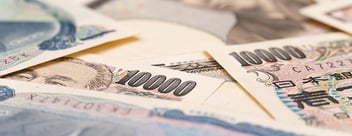Last week's widespread rise of the euro against its major counterparts should not be misleading. The single currency is destined to fall further in the coming months, particularly against safe haven currencies (USD, JPY, and to a lesser extent against the CHF due to repeated interventions by the Swiss National Bank).
The five factors that are likely to penalise the euro in the short to medium term are as follows:
The euro received welcome support last week with the presentation of the Franco-German proposal for a coordinated European recovery. The aim is for the European Commission to raise EUR 500 billion on the financial markets, which will then be spent on the euro area member states most affected by the coronavirus. The ingenuity of this system lies in the fact that the additional debt associated with the coronavirus will not be included in national accounts (and increase the debt-to-GDP ratio in many countries). However, this ambitious proposal still needs to be agreed by the "frugal four" (Netherlands, Denmark, Sweden and Austria). All indications are that it will be torpedoed and will not succeed. In other words, the prospect of a truly coordinated recovery in Europe is receding, which means that its recovery is likely to be more gradual than in the United States.
2. The growing trade war between the United States and China
The verbal escalation between Beijing and Washington is a serious risk aversion factor on the foreign exchange market which could notably favour the Japanese yen (JPY) - which serves as a barometer to judge the state of negotiations between the two superpowers. In the space of a week, the Trump administration and the US Congress have once again criticised China's handling of the coronavirus crisis, calling for an international investigation into the crisis, threatened Chinese companies with the possibility of being delisted from the US stock exchange and highlighted Beijing's failure to meet its commitments to purchase US products in connection with the trade agreement of last January. President Trump, who is running for another term, has understood that one of the keys to the American presidential election is the surge in anti-Chinese sentiment among a large part of the population. We must therefore expect that summer will remind us of the worst episodes of the 2018-19 trade war.
3. The risk of a second wave of coronavirus
Deconfinement is not synonymous with the end of the pandemic. The examples of Singapore, South Korea and China, where a new confinement zone of more than 100 million people has been established, clearly indicate that a second wave of the coronavirus is likely. Certainly not all countries would react in the same way - France is prepared to confine part of its population again while this option is rejected by US President Donald Trump - but what is certain is that the reaction of the foreign exchange market would be unequivocal. This would accentuate flows into safe-haven currencies, such as the U.S. dollar (USD) and Japanese yen (JPY), at the expense of the euro.
4. The forgotten risk of a hard Brexit
In the foreign exchange market, the risk that is still most likely to cause strong movements in rates is the one that is overlooked by market operators. One of the major risks that is forgotten is that of a hard Brexit. Tensions between Brussels and London have risen sharply in the past week as the end of June deadline for the UK to request an extension of the transition period approaches. The EU's chief negotiator sent a strong letter to his British counterpart criticising the conduct of the negotiations. The scenario of an exit from the EU at the end of 2020 without an agreement being finalised is high in view of the acrimony surrounding it. If that were the case, it would be a lose-lose situation for both parties.
5. Technical analysis argues in favour of a downward move
Over the past few weeks, the EUR/USD pair has been unable to break through the 1.10 psychological level - which has been the major resistance since April. Technical signals, such as moving averages, are bearish and indicate a return to the bottom of the range in which the EUR/USD has been trading since the start of the coronavirus crisis. Our final goal of 1.06 is still on target.
Topics






